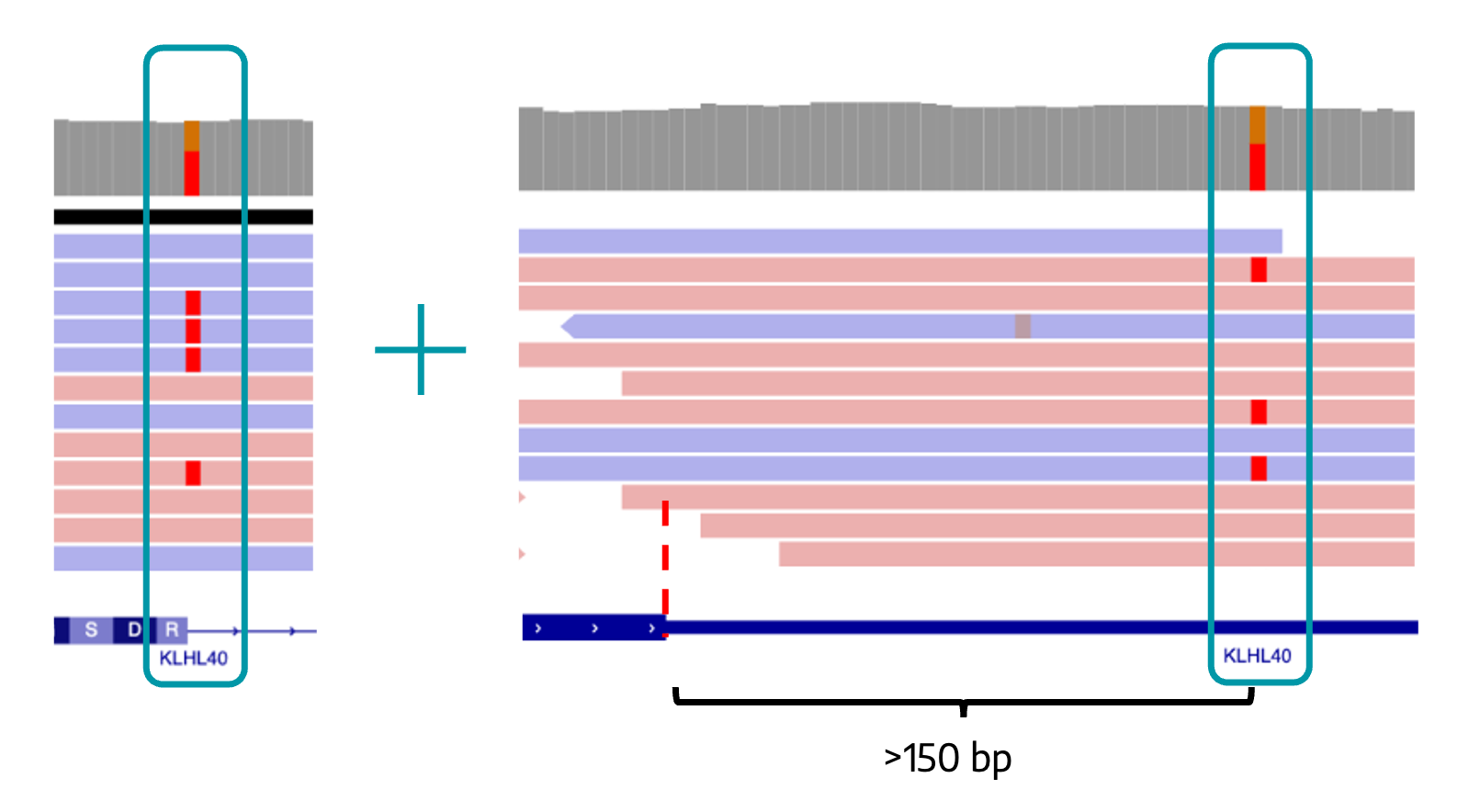
MISSED BY OTHERS, DETECTED BY US
Genomic Unity® Case Study
Clinical presentation
A 7-year-old female with hypotonia and congenital myopathy characterized by nemaline rods seen on muscle biopsy presented with the following symptoms:
- Ankle pain that limits mobility
- Frequent falls
- Global developmental delay
- Wide nasal ridge and broad tip
- Tented upper lip
- Bridged palmar crease
Previous genetic testing
Multiple tests were performed with negative results. Including panel and exome testing that identified a likely pathogenic splicing variant in the recessive KLHL40 gene, but no second variant:
- Chromosomal microarray
- Whole exome sequencing
- Neuromuscular disorders panel
- DMPK repeat expansion analysis

Genomic Unity® Testing
was ordered because of its ability to identify all major variant types in a single test.
Results and interpretation
Variantyx Genomic Unity® testing identified a maternally inherited, pathogenic KLHL40 variant in the 3’-UTR together with the previously identified, paternally inherited, KLHL40 splicing variant – finally providing a complete molecular diagnosis.
Functional studies of the 3’-UTR variant are consistent with loss of protein function.
Diagnosis: Nemaline myopathy 8

Uniform data from WGS clearly shows both the splicing (left) and 3’-UTR (right) variants.
The Variantyx Difference
Why was Genomic Unity® testing able to identify the 3′-UTR variant missed by exome and panel tests?
-
When exome testing failed to identify a second KLHL40 variant, panel testing with included del/dup analysis was ordered for its deeper coverage and higher likelihood of detecting a small deletion. However, both exome and panel testing tend to focus on exonic regions and their immediately flanking sequence. This variant was located >150bp into the 3’-UTR region.
Variantyx genome analysis covers all regions of the gene, including all intronic and regulatory regions. It easily detected both the 3’-UTR and splicing variants while simultaneously ruling out a partial gene deletion or other variant.
Variantyx tests that would have identified these variants
Want similar results for your patients?
Connect with a Clinical Specialist to find out how easy it is to bring the power of whole genome sequencing into your practice.
